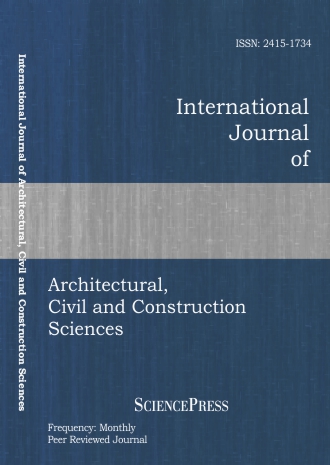
Scholarly
Volume:9, Issue: 12, 2015 Page No: 1511 - 1516
International Journal of Architectural, Civil and Construction Sciences
ISSN: 2415-1734
3203 Downloads
Reinforced Concrete Slab under Static and Dynamic Loadings
In this study, static and dynamic responses of a typical reinforced concrete solid slab, designed to British Standard (BS 8110: 1997) and under self and live loadings for dance halls are reported. Linear perturbation analysis using finite element method was employed for modal, impulse loading and frequency response analyses of the slab under the aforementioned loading condition. Results from the static and dynamic analyses, comprising of the slab fundamental frequencies and mode shapes, dynamic amplification factor, maximum deflection, stress distributions among other valuable outcomes are presented and discussed. These were gauged with the limiting provisions in the design code with a view of justifying valid optimization objective function for the structure that can ensure both adequate strength and economical section for large clear span slabs. This is necessary owing to the continued increase in cost of erecting building structures and the squeeze on public finance globally.
Authors:
References:
[1] W. H. Mosley, J. H. Bungey, and R. Hulse, Reinforced concrete design,